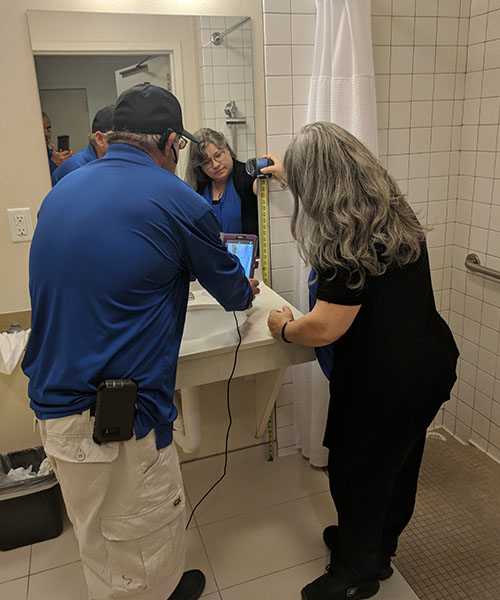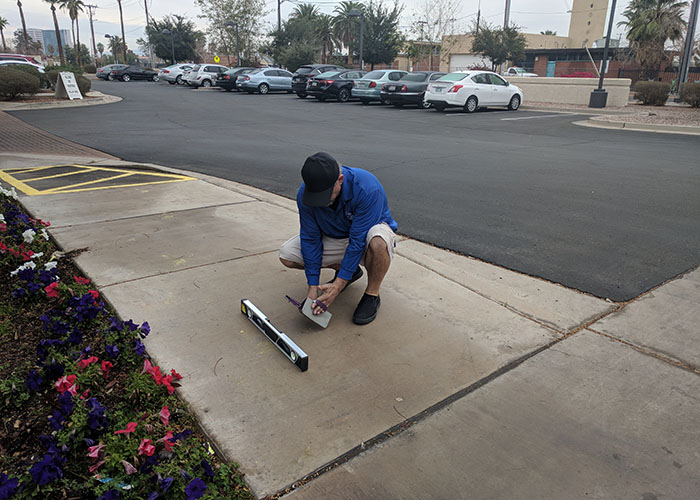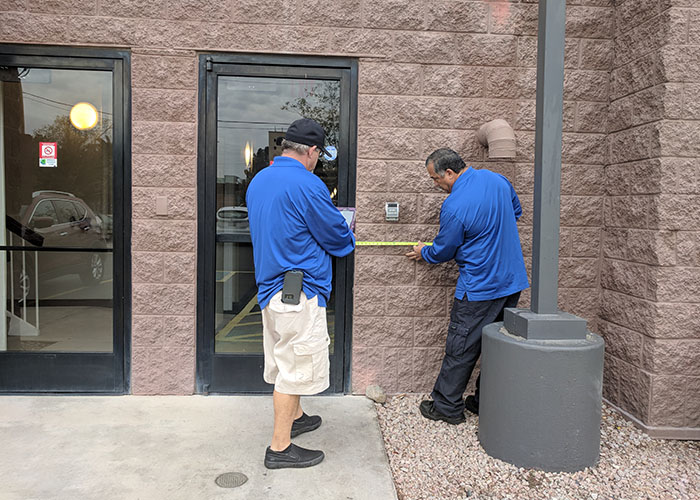
Assessments for ADA Compliance
Serving People With Diverse Needs
Organizations that provide accessible facilities and inclusive services to individuals with disabilities show they value the fastest-growing minority population in the world. Life Quest will thoroughly assess the following (and more) for compliance, based on the 1991 and/or 2010 Standards, depending on the built and remodeled years:

- Accessible Paths of Travel
- Areas of Assembly
- Business Centers
- Dining Areas
- Entrances
- Fitness Facilities
- Guest Rooms
- Lobby
- Locker Rooms
- Meeting Spaces/Conference Centers
- Parking
- Parks and Trails
- Playgrounds & Picnic Areas
- Pools and Spas
- Public Restrooms
- Restaurants/Bars
- Signage
- Stairs/Elevators
- Venue seating disbursement
- Websites
Dr. Nanette Odell, of Life Quest Training & Consulting, LLC, has developed a proprietary method for conducting an ADA Self-Evaluation Report (SER). With it, detailed pictorial and video data is collected that seamlessly converts into a Transition Plan Spreadsheet in a timely and effective manner.
The DOJ does not set a specific time frame for completion of Transition Plan modifications but they do expect that progress is consistent. This is one of the reasons why Life Quest developed the 5-point rating system. While some items may require a good deal of planning, funding allocation then construction, there are often also many items that can be completed without a great deal of time, effort or cost.
COMPLEXITY RATING
A 5-point rating system has been developed to suggest the complexity level of the modification, if applicable. These include:
- 5-Compliant (no modifications needed)
- 4-Non-compliant: Simple (modifications are relatively simple: signage, door hardware, etc.)
- 3-Non-compliant: Moderate (modifications may require more expertise: relocating grab bars that need sufficient backing, replacing plumbing, etc.)
- 2-Non-compliant: Difficult (modifications may include moving walls, moving plumbing fixtures, etc.)
- 1-Non-compliant: Technically infeasible (modifications can be technically infeasible, for example, raising the vertical clearance in an entire parking garage, or would cause undue hardship). Options towards other solutions are often given, when possible.
PRIORITY RANKING
A ranking was also developed to assist in determining prioritization for modifying items:
- A-Highest Priority: Highest priority due to limited access or potential for injury. Protruding objects are often given an A as they can cause injury.
- B-Moderate Priority: Most of the items will be shown as Moderate as while they are not urgent but still need to be addressed.
- C-Lowest Priority: While still needing to be addressed, these items are not necessarily considered as critical as others.
COMPLEXITY AND PRIORITY EXAMPLES:
The Transition Plan data provided will include both a Complexity and Priority Rating. For example:
4A: Door hardware needing replacement from a knob to a handle. This is not complex (4) but is a high priority (A) because lack of access into a room is a high priority.
3C: Mirror in need of relocation to 40″ from the floor to the reflective surface. This may or may not be a complex task, based on the mounting of the mirror (3) but is not considered a high priority as a mirror that is too high does not prevent someone from accessing a sink, toilet, etc.
Here are some examples related to parking lots:
4 – Install or raise compliant parking lot signage (Priority B or C, depending on how low)
3 – Restripe a parking lot to ensure compliant widths of the ADA spaces, access aisles, etc. (Priority A or B, depending on the existing space)
2 – Resurfacing a parking lot to modify for slope and drainage issues that affect ADA access. (Priority A or B, depending on the slope)
Examples related to restrooms:
4 – An ADA stall that needs compliant handles on both sides of the door (Priority A)
3 – An ADA stall that has an entryway clearance of less than 32″, requiring a modification of the entryway opening and wider door (Priority A or B, depending on current width)
2 – An ADA toilet that is too close to the wall, requiring the movement of plumbing fixtures to achieve compliance. (Priority A or B, depending on the distance from the wall)
ADA Self-Evaluation Reports are sent electronically from the software platform and can be viewed via an html format that includes video of findings as well as pictures that can be enlarged. It is also provided in a PDF format.







